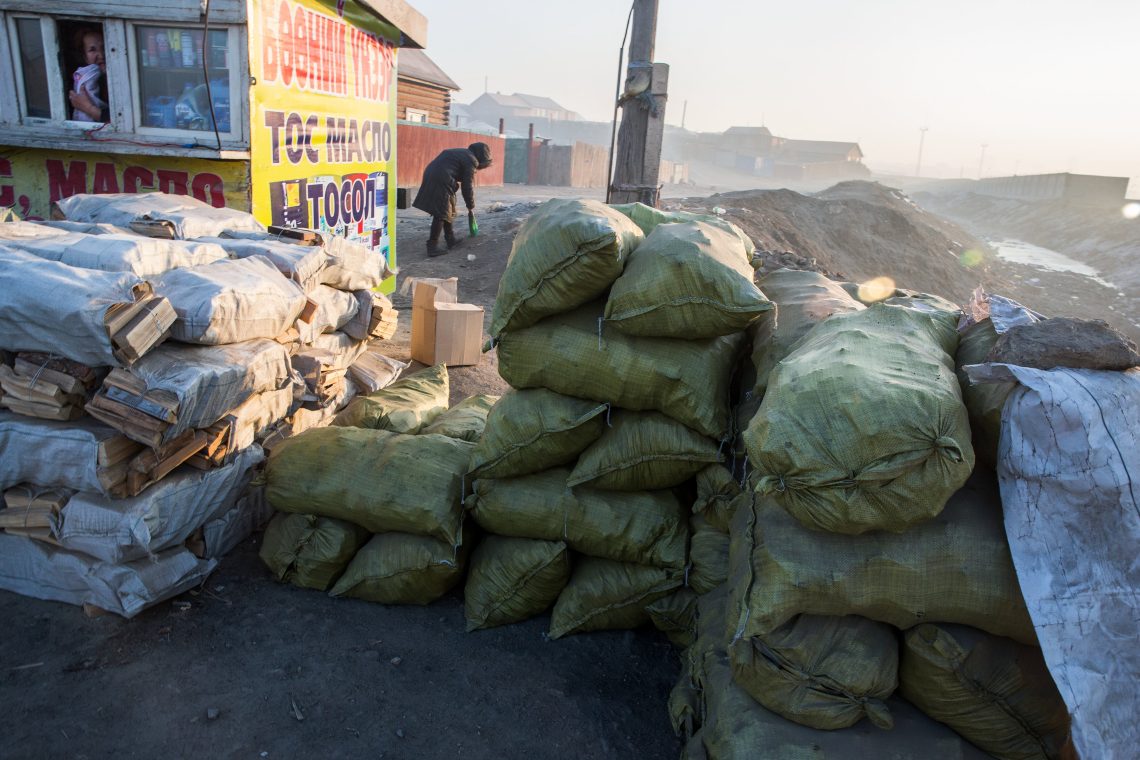Freezing winter and old power plants: A Mongolian reality
Mongolia faces harsh winters, outdated coal plants and limited domestic resources but could benefit from the White House’s push for fossil fuel funding abroad.

In a nutshell
- Half of Ulaanbaatar’s residents rely on aging coal plants for heat
- International bans block funding new coal plants, limiting Mongolia’s options
- The U.S. policy change promoting coal offers Mongolia a lifeline
- For comprehensive insights, tune into our AI-powered podcast here
In Ulaanbaatar, the capital of Mongolia, winter temperatures can plummet to a chilling minus 35 degrees Celsius. For half of the city’s 1.5 million residents, coal-fired power plants serve as the only source of heat. During the harsh winter months, Ulaanbaatar, known as the world’s coldest capital, relies on these facilities that burn coal to produce high-pressure steam, providing electricity and essential heating for residents and offices in high-rise buildings. But power and heat shortages are widespread and domestic funding for new power plants is not forthcoming, making the new United States policy of promoting coal exports and lending for the construction of new fossil-fuel power plants abroad an attractive proposition.
Mongolia relies on coal-fired combined heat and power plants (CHP) in which boiling water produced as a byproduct of steam production for electricity flows through pipes across the city, warming apartments, schools, hospitals and offices. The power plants in Ulaanbaatar, however, are quite old.
The largest and most recent CHP, Thermal Plant No. 4, started operations in 1983 and was fully completed in 1991, with expansions taking place in 2007 and 2014. It generates just over half of the total electricity for the country’s central grid and nearly 70 percent of the heat needed for the capital. The other two plants, No. 2 and No. 3, were commissioned even earlier, in 1961 and 1968, respectively. Even with maintenance and renovations, these municipal heating plants are aging and will eventually need to be either completely rebuilt or decommissioned. Over 30 percent of heat transmission pipelines in the capital city need to be replaced.
Compounding the problem of an aging population and transmission infrastructure, the demand for heat and electricity has doubled over the past decade. Just to meet the existing demand of the capital’s municipal heating system, the supply of centrally produced heat needs to be 50 percent higher than the current production level. This means that there is a supply shortage in the city’s heating system. While electricity imports from Russia and China currently meet over 20 percent of the country’s demand, there are still more than 400 megawatts of unmet demand for electricity, in addition to the heat demand. Particularly during the winter months, cascading blackouts occur as the system struggles to meet the growing need.
In Mongolia, as elsewhere around the globe, population growth is increasingly concentrated in urban areas. Nearly half of Ulaanbaatar’s population lives in housing that lacks essential services like centrally supplied heating, sanitation and clean water. Further expansion of the city is stymied by these shortages and this inability to expand is crippling for both economic and human development.
A worst-case scenario is that if a single power plant fails, the city could quickly become uninhabitable due to the lack of circulating hot water for heating.

Obstacles to building new cogeneration plants
Why not build new power plants? The answer is simple: Many countries worldwide have halted the construction and financing of coal-fired power plants in third countries. This shift reflects a global consensus to refrain from funding such plants abroad through public institutions.
In 2021, the G7 – which comprises the largest industrial nations, the U.S., Japan, Germany, the United Kingdom, France, Italy and Canada – and the European Union, announced that they would cease financing the construction of coal-fired power plants abroad. China made a similar pledge that same year. Additionally, the G20, which includes all G7 members along with other major economies such as China, Brazil, India, Russia, South Korea, Indonesia and Saudi Arabia, also committed to this policy in 2021. These pledges aim to fulfil the Paris Agreement’s objectives to combat global climate change.
This decision means that state-owned banks, affiliated entities, supported banks, credit agencies and insurance companies cannot participate in projects involving coal-fired power plants outside their home countries. This restriction also applies to international development institutions such as the World Bank, the Asian Development Bank and the Asian Infrastructure Investment Bank, along with their respective affiliates.
However, this policy does not preclude these countries from building coal-fired power plants domestically, and that growth is primarily taking place in Asia, with China and India accounting for the bulk of all new fossil-fuel generation capacity. In 2024 alone, China initiated construction of 94.5 gigawatts of coal-fired power plants, more new coal-fired generation capacity than the rest of the world combined. Japan and South Korea also launched new coal-fired power plants last year. Indonesia, India and Vietnam introduced significant capacities during this period.
For Mongolia, the consequences of the lack of international funding for its coal-fired power plants have been severe. Banks are unwilling to provide loans, insurers no longer offer export insurance and sovereign funding is unattainable. Foreign private investors are effectively bound by this, as they cannot access funding or insurance either.
At the same time, Mongolia’s own public funds are not a solution. The country had a trade surplus of over $4 billion, mostly from trade with China in 2024, driven largely by exports of metallurgical coking coal, copper, iron ore and various mining and agricultural products. However, its budget allocates just over $2 billion for public investment. This includes sovereign loans from abroad for specific projects such as a wastewater treatment facility, a hydropower plant, roads and transmission lines.
Elected officials in Ulaanbaatar need to make hard decisions: Should they prioritize public investment on power plants for heat and electricity to bring an end to rolling blackouts and heat shortages, or continue public expenditure for schools, hospitals, roads and bridges? Public investment funds are scarce for this East Asian nation. The immediate push for more visible public spending, such as roads, schools and hospitals, usually prevails.
Even if the government allocated funds, equipment to build and operate new plants would have to be sourced from overseas, and interactions are severely constrained. Manufacturers of such large, specialized equipment will require substantial cash prepayment given the absence of export financing and insurance options.
Why not invest in renewable energy?
Renewable energy accounts for nearly 20 percent of Mongolia’s total energy production. Fossil fuels that are cleaner than coal, such as natural gas, are not available in Mongolia, and imports are impossible due to a lack of infrastructure. Talks on the Power of Siberia 2 gas pipeline linking Russia and China through Mongolia have yet to progress beyond feasibility discussions. Plans to build a hydropower plant are complicated by environmental concerns because it intersects with the water supply to Lake Baikal, the world’s largest freshwater reservoir, situated in Russia.
Without a substantial supply of natural gas or hydropower, Mongolia already struggles to manage the intermittent nature of the renewable energy supply, limiting its potential to increase its overall volume.

Storage batteries and fast-growing solutions like green hydrogen, intended to replace existing coal-fired power plants or meet new demand on a systemic scale, are not yet economical at scale and would exponentially increase electricity prices for consumers, or the government would have to subsidize it. Consumers already pay an 11 percent surcharge on their electricity bills, the so-called “renewable support tariff,” and these solutions will increase it drastically. Long-term subsidies are not sustainable for Mongolia’s economy and are unlikely to be funded from international sources.
Even if the country were willing to adopt the more expensive option of heating with renewable-powered electricity, transitioning the existing heating system is not feasible in the short term. Currently, approximately 350,000 households and businesses rely on a central heating system that uses heated water running through the pipelines. Transitioning to electric or gas heating or decentralized heating would require a lengthy and costly overhaul, potentially taking decades.
Moreover, high-cost solutions like heat pumps make this option unviable as well. Mongolia’s gross domestic product (GDP) per capita is close to $7,000, making a heat pump priced between $5,000 and $10,000 quite expensive for the average household.
An additional challenge to the question of heat sources is that nearly half of the residents in the capital do not live in centrally planned urban areas but in ger areas, districts where people live in houses or traditional Mongolian nomadic dwellings called gers (yurts).
Houses, gers and other buildings in these districts are not connected to the central heating system that warms the rest of Ulaanbataar. Instead, they rely on burning coal briquettes in stoves to generate heat. This heat, either directly or through heat-only boilers, keeps families and businesses warm during harsh winters. But this also causes severe air pollution, among the worst globally during winter. According to the World Bank, one in 10 deaths in the city are caused by air pollution from coal burning.
Read more by Zorigt Dashdorj
- Eurasian Economic Union at 10: Between goals and realities
- Strategic competition prevailing over economics
- Pre-World War mentalities resurface with rising political extremism
The problem extends beyond the capital city, as over 200,000 households in provincial centers live in dwellings without heating connections, relying on localized coal burning too. This contributes to the rapidly increasing air pollution, creating health risks, although not yet on par with those in Ulaanbaatar.
Thus, Mongolia is caught between well-intended global policies and the harsh reality of its economic capacity and existing infrastructure. The country urgently needs to construct new municipal power plants to reduce air pollution, deaths and health hazards and build more apartments and houses with modern heating supply, as other energy alternatives are unaffordable and impractical at least for the next several decades. Besides these issues, if new cogeneration capacity is not built soon, the capital city could risk freezing when older plants close.
Unfortunately, well-intentioned international development organizations keep producing reports on energy transition for Mongolia until 2050, while people are dying and suffocating in the coldest capital in the world. Even these reports highlight the need for more and new coal-fired power sources, but fail to address the issue of funding.
An unexpected solution
The Trump administration’s decision to promote the export of coal from the U.S. and allow government institutions, such as the Export-Import Bank (Ex-Im), to finance technology exports for coal-fired power plants overseas offers a timely opportunity for countries like Mongolia. On May 1, the U.S. Ex-Im Bank lifted this 12-year restriction, prompting significant backlash from environmental groups both domestically and internationally.
However, other international institutions should also consider funding coal-fired power plants for limited development and environmental reasons and implement more transitional arrangements.
When the transition to renewable energy is technically infeasible or financially unsustainable for developing countries, exceptions should be made for financial and technical reasons, even for the most ambitious policies.
In situations like Mongolia’s, where hundreds of thousands of households cannot access modern housing due to a lack of domestic investment and the global ban on funding coal-fired power plants abroad, exceptions should be made for developmental reasons.
When a situation like Mongolia’s arises, longer transition periods are essential to facilitate the adoption of new technologies. If local construction is feasible, carefully monitored and certified, exemptions from requirements for building abroad should be allowed on all these grounds.
Mongolia is not unique in facing this issue. Many examples from other Global Majority countries show that the most vulnerable populations often bear the heaviest burden of the significant costs – both financial and physical – of such transitions. The Trump administration’s decision seems to be motivated by American business interests, but it also offers an opportunity to rethink global policies on funding coal-fired power plants abroad. Such a shift could genuinely help countries like Mongolia address their urgent developmental and environmental needs.
Contact us today for tailored geopolitical insights and industry-specific advisory services.






